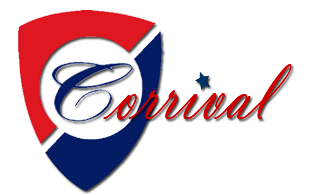Here is a picture of poor Corrival in February of 2010. She sustained quite a bit of damage from Hurricane Ike in September of 2008. She broke loose from her moorings during the storm and was lost for two weeks before her previous owner's son spotted her bobbing aimlessly in Nassau Bay.
The wind ripped her mainsail off the boom and mast leaving only the slugs and shreds of cloth like white moths lining up the mast. Her headsail unrolled with such force that the headstay snapped breaking the furler. This picture shows the remnants of the headsail wrapped around the broken furler and headstay drooping down in front of the mast and resting to starboard. The forward hatch was completely blown off. In its place was a Styrofoam cover.
Corrival may have been badly beaten, but her hull was intact and structurally sound. Her starboard outer shroud chain plate was attached to a rotted piece of wood that served as a bulkhead, which I immediately replaced. There were a couple of soft spots on port and starboard deck near the main portlights, but other than that, she was a sturdy ship.
After replacing the bulkhead, refastening the chain plate, and installing a new headstay, I added new sails and took her out for a spin. The tiller was rotted and mostly missing, so I improvised with a cheap piece of 2x2x42, which worked well for over a year. I also replaced the stiff and torn vinyl bimini with a new cloth cover.
To my astonishment, she sailed amazingly well. She easily points up to 30 degrees close hauled and makes little leeway, thanks to the deep fin keel and huge spade rudder. She balances out nicely and holds course with very little input.
Here she is in the middle of her bottom job. You can see the fin keel and spade rudder very well in this photo.
Columbia's specs state she draws 4'7", while their brochure says 4'10". We measured, and it is 4'10" easily.
Ben Miller of
Ben Miller Boat Works did the bottom job and painted on a new waterline (taped off for painting in the photo). He fixed the soft spots on the deck and installed a new marine sanitation device (toilet for you landlubbers). He installed a new depth/speed/temperature gauge and transducer, and replaced all the through hull fittings with new sea cocks. I've heard good things about Ben from several friends, and he certainly lived up to his reputation. I would highly recommend him.
Last year, the folks at
Hayes Rigging installed the new headstay. This year, I asked them back to replace the lifelines and all running rigging. They also retuned the shrouds for me. They did a fantastic job.
So, here she is again at Double Bayou a year after the photo above was taken. She looks pretty different. My partner (seen waiving through the portlight) and I repainted the deck and restored the teak. We are completing a full refit of the electrical system. You can see we now have a proper marine 30 amp electrical cord (yellow) and watertight receptacle.
On this trip, I was glad I installed cockpit reefing. The winds were steady at 20kts, gusting to 30. I put a reef in the main and she flew from Kemah to Double Bayou in three and a half hours. That is an average speed of 6.28 knots. Her theoretical top hull speed is 6.25. She heeled to just under 20 degrees the entire time. Perfect. I wish I had a picture of that.
Since then, we have done some more cosmetic work. We replaced our trusty 2x2 tiller with a new mahogany and ash sculpted tiller and put in new engine controls. Inside, she has a new teak and holly floor under the booth-style table, and the bilge floor covers have been replaced with teak and holly boards. I'll post pictures of that soon.
Looking good and ready to go, she is now going to have to prove herself in the
Harvest Moon Regatta, a 150 nautical mile race from Galveston to Port Aransas. She was assigned a PHRF of 240, which is fairly high (meaning comparatively slow. The higher the rating, the slower the boat. Other boats in her category have ratings of 140-180). I hope that handicap is high enough to let me earn a trophy!




















